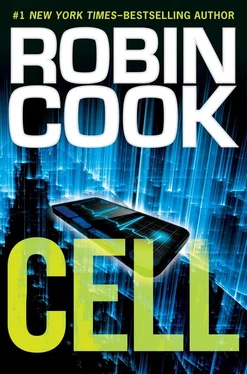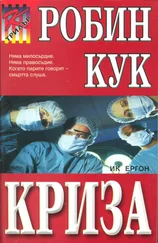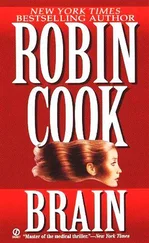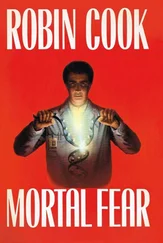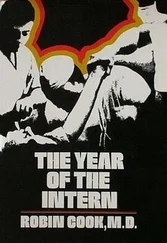As George was one of the few unmarried residents, Clayton had initially sought him out for hints on how to meet some of the young fillies (Clayton’s word) that he assumed George would be privy to. That had never come to pass, but over time Clayton and George had established a friendship of sorts that for the most part had evolved into Clayton’s trying to fix George up with the women so that he, Clayton, could meet their friends.
George’s immediate problem was that before coming to the presentation he hadn’t bothered to get permission to leave the hospital, so he was AWOL with one of the radiology bigwigs onstage in front of him. Even though it was his last day of an easy rotation, and he had covered himself, he felt uncomfortable. He considered getting up and walking out but decided doing so would call more attention to him than just remaining in his seat. Luckily he was a good distance from the dais, and Clayton showed no sign of having spotted his resident.
George took a deep, calming breath and directed his attention back to Paula. She certainly did look terrific and impressively “together.” He found himself regretting that he hadn’t followed up with her back in medical school and wondered if reviving an acquaintance with her would fulfill his promise to Kasey.
George’s musings were interrupted by Thorn launching into a slick presentation of Amalgamated Healthcare’s spectacular growth. He explained that the company was positioned to take full advantage of the Affordable Care Act, something most other insurance companies thought impossible, given the law’s restrictions on profit, but he and his inordinately competent team had figured out a way and were leading the charge. All they needed was an infusion of more capital to continue their spectacular expansion.
“The politicians, whether they meant to or not, have put the health insurance industry in the driver’s seat to manage what will more than likely balloon to nearly twenty percent of the United States’ GDP,” Thorn continued. “Most of us know deep down that they should have passed a kind of Medicare for everyone. But they didn’t have the courage. Instead they have handed the keys to us on a silver platter. This is an unprecedented opportunity, particularly in view of what you’re going to learn today. The world, not just the United States, is on the cusp of a paradigm shift in medical care as the profession is dragged kicking and screaming into the digital age. And we, Amalgamated, are going to be leading it.”
George felt a jolt of electricity surge through his body. Thorn had hit a nerve. Over the last several years, George had become vaguely uneasy about what was happening in medicine in general and in the specialty of radiology in particular. There were somewhat fewer positions available and salaries were heading south. It wasn’t an overwhelming change but nonetheless noticeable. Consequently Thorn’s words were jarring, giving substance to a nebulous yet vexing fear that he was entering the medical profession after it had passed its zenith.
“Our country,” Thorn continued, “is going to experience a democratization of medicine that is going to catch the medical profession by surprise, but not Amalgamated. Already the general public’s main source of medical information is not doctors, as it’s been for a number of centuries: it is the Internet and social media. To illustrate my point, compare the medical profession as you know it today to another industry, dominated by the iconic Eastman Kodak Company. Kodak thought it was in the film business rather than the image business.” He paused. “We all know how well that went.”
The audience laughed. Kodak had filed for bankruptcy in 2012.
“The medical profession thinks it’s in the sickness business. It is not. It is in the health business. Preserving and maintaining health and preventing disease are the future of medicine, not treatment in the form of ever more drugs and procedures. And I’m not talking about prevention in a passive sense. I’m talking about prevention as an active process, but not wasteful, like yearly physicals and full-body CT scans. And when treatment is needed, it will be directed for the individual, not some imaginary person representing the statistical mean.
“This is important, because a third of the almost four hundred billion dollars the public pays the pharmaceutical industry is totally wasted. That’s one hundred thirty billion dollars going down the drain. The drugs involved often have no positive effect on a specific individual. If a drug trial showed that it only helps five percent of patients, that means it doesn’t help ninety-five percent, even though side effects are pretty close to one hundred percent. Bad odds!
“We at Amalgamated don’t want to waste money on useless drugs and dangerous procedures. We want to treat the individual, not a statistical construct. How will this come to pass? Through this app!” Thorn waved toward the LED screens behind him as if he were a conductor of a symphony orchestra. Coinciding with his gesture were the first thirty seconds of Beethoven’s Fifth Symphony. Simultaneously the word iDoc flashed onto the screens in foot-high bold black letters.
After pausing for effect, Thorn turned back toward the audience: “A glowing example of the failure of current medicine is the fact that the shortage of primary-care physicians has never been solved. As a result, there are too many unnecessary and expensive visits to emergency rooms, too many specialists seeing patients who don’t need to be seen by them, too many procedures on patients who don’t need them, and too many patients being prescribed unneeded drugs. All of which means a massive number of unnecessary, wasteful payouts . Well, my friends, all that is going to change; there’s a new doctor in town! The twenty-first century’s primary-care physician is an FDA conditionally approved smartphone app, and its name is iDoc!”
Thorn again gestured toward the giant LED screens as the images of three smartphones made by the world’s largest manufacturers — Apple, Samsung, and Nokia — flashed. The phones displayed a single app: a white square containing a red cross with iDoc spelled out along the horizontal arm. George caught his breath from another jolt. He’d seen the icon before.
“iDoc and its incorporation into the smartphone application platform is a result of our close working relationships with leading smartphone manufacturers and developers. The end result is a marvelous convergence of the Internet, mobile phone technology, quantum cloud computing with our state-of-the-art D-Wave quantum supercomputer, social networking, digital medical genomics, wireless biosensors, and advanced imaging. iDoc will be the doctor of tomorrow, and we have it today!
“We’ve licensed the distinctive symbol of the International Red Cross, as we felt it imperative to use a universally recognized icon. Amalgamated Healthcare will also be making an additional donation to the organization with each download of the iDoc app. And we’re not stopping there. Amalgamated will mimic the Affordable Care Act in — what else? — affordability! Enrollees with incomes of up to four hundred percent above the poverty line will either have their smartphones subsidized or given out free. Regular phone plans will stay in effect for enrollees, but data plans will be converted to unlimited. Our subsidization of the data plans will again mimic that of the ACA. All data generated by the app will be stored on our cloud services, enabling an acceptable baseline phone configuration of three-G capability with a minimum of thirty-two GB of memory. Any current enrollees who now fall below those smartphone specifications will be upgraded at our expense.”
Now George felt a chill descend his spine. He had the distinct feeling he was witnessing history in the making. With the idea of a smartphone functioning as a primary-care physician, something he had thought about in the past, he was in shock. His mental association of the Amalgamated Healthcare presentation with one of Apple’s product releases was magnified. This was a big deal. He was also amazed that Amalgamated would be able to absorb all these costs and still have a profitable business plan. What was he missing?
Читать дальше
